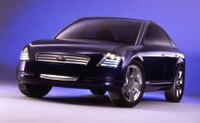Sid Ramnarace | |
|---|---|
 Ramnarace at the 2024 Independent Art Fair opening reception at Spring Studios in New York City. | |
| Alma mater | Cleveland Institute of Art |
| Occupation | Industrial Designer • Consumer Strategist |
| Known for | Ford Mustang Cuisinart Aston Martin Project Vantage Concept Ford 24.7 [1] Savora [2] Videri [3] |
Sid Ramnarace is a Canadian-born American designer, [4] and consumer strategist who has worked with the Ford Motor Company, in Dearborn, Michigan, United States, and has designed automobiles, furniture, jewelry, textiles, glassware, and home decor. [5] [6]







